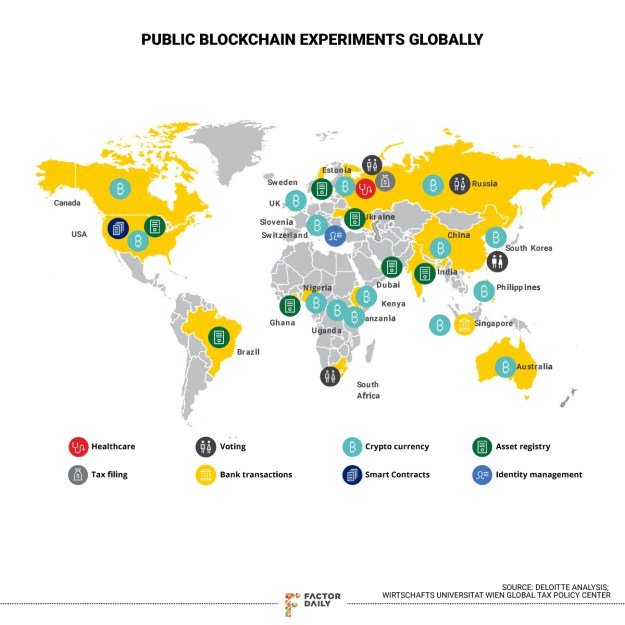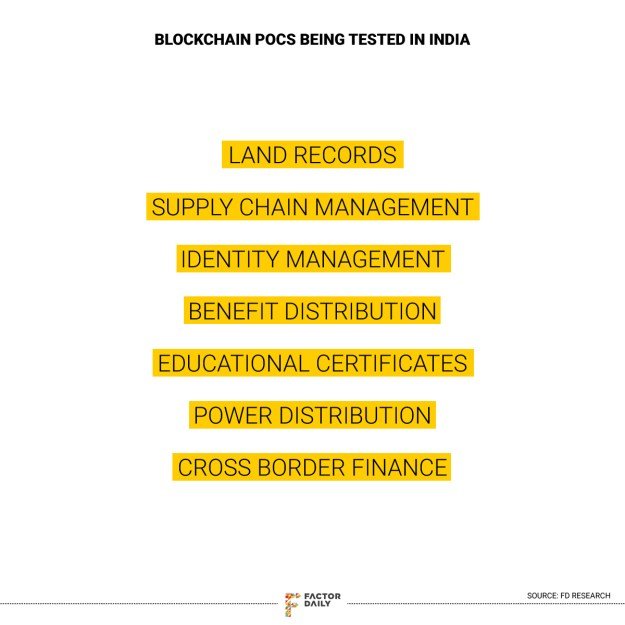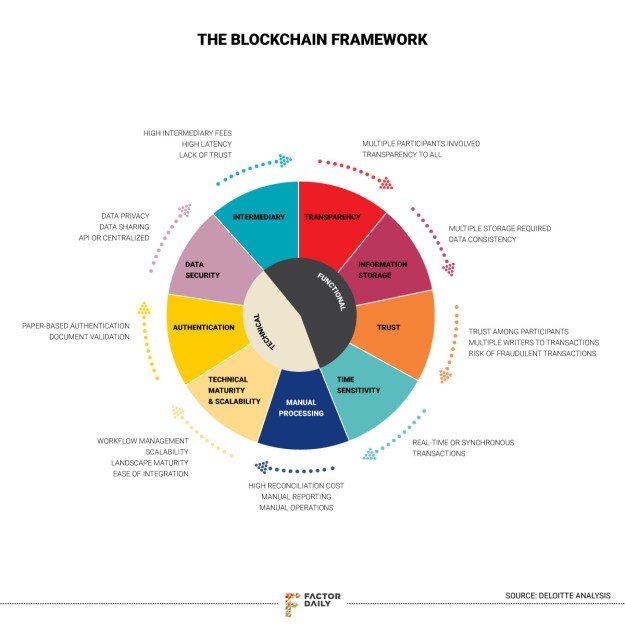
More than nine months after IndiaChain was conceptualised, the Indian government is set to launch a massive blockchain project that will operate as a platform – similar to the unified payments interface, or UPI, a layer of software that makes it easy to transfer money in real time.
The IndiaChain with its platform characteristics, it is envisaged, will allow both government and private entities to take advantage and build large scalable solutions.
As part of this plan, Niti Aayog, the Indian government’s think tank, is looking at bringing out a blockchain policy paper early next month. The paper – similar to the artificial intelligence discussion paper released last fortnight (see back story here) – will look at the best possible cases of deployment of blockchain in India, according to sources close to the development.
“The AI discussion paper was a priority because the finance minister had announced about it during the budget,” said a Niti Aayog official. “The work on the blockchain paper is in full swing now and hopefully it will be out by the end of the month or beginning of July.”
(Skip this paragraph if you are familiar with blockchain technology.) Blockchain is a decentralised, distributed, digital ledger maintained across a network of computers, called nodes. Think of it as a large record book shared and updated by many people. No data on the blockchain can be modified without everyone agreeing to the change. Also, the record book is not stored in one place but instead is distributed among the bookkeepers ensuring that there is no single point – as in the case of a centralised database – where the records can be tampered. This makes blockchain virtually unhackable, secure, and, importantly for government use cases, leakage proof. Cryptocurrencies are built on blockchain technology but this story is not on them.
Back to IndiaChain. FactorDaily had reported earlier that Niti Aayog is working on a proof of concept using blockchain technologies to bust the widespread problem of fake drugs. Alongside, it has also started working on other PoCs of blockchain around land records, agriculture and healthcare.
But, none of these is a part of Indiachain, the mother of all blockchain, describes the source quoted above. “Those were PoCs that are in the works to understand the implications of blockchain technology to solve large-scale problems,” he said.
Platform-based approach
Niti Aayog is looking at how the government can build a public goods infrastructure, a second source said. He used the example of BHIM, a cashless app of the National Payments Corporation of India, or NPCI, which also architected and maintains the UPI. BHIM was built on UPI and was a reference application. “If the government would’nt have forced people to use BHIM, the adoption wouldn’t have shot up the way it has, today,” he said.
The ambition of replicating UPI-like features on IndiaChain has a sound basis, at least if viewed from the government’s perspective. The UPI application programming interface, or API, was opened up for other private companies to use and a bunch of payments applications are built on it. WhatsApp is beta-testing payments. Amazon Pay, Google’s Tez, Paytm, PhonePe, and Reliance Jio are built on UPI.
IndiaChain is being looked at from the same lens – to build an interoperable platform that others can also use. “Some reference blockchain applications will be built and then other companies can build similar or better applications,” said the first source.
Companies and other government bodies can build “sidechains” in specific areas goes the logic. For example, in the mortgage business, an individual’s credit records can be on a separate blockchain (banking sidechain), which can be linked back to IndiaChain. “Banks can use that information to give loans and track records,” the second source explained. Also, a collateral, if linked to a smart contract can be easily taken over autonomously in case of a default.

A sidechain can be described as a separate blockchain derived and linked to the main blockchain but which can perform a separate function on its own. The original blockchain is usually called the main chain and the additional blockchains derived are called sidechains. The sidechains can function independently of the main chain and data can also be moved back to the original blockchain at time intervals that can be preset.
Similarly, there are use cases in healthcare – e.g.: vaccines and immunisation – that the government thinks blockchain can have a major role to play in. For this to take off, IndiaChain or its sidechains will need to be built in such a way that hospitals and doctors see value in it and adopt it easily.
“The government can build two-three layers, standardise these data layers, and build adequate consent controls,” the first source said.
Once that is done, the APIs can be exposed to private companies with safeguards on the use of data.
The possibilities go much beyond. For instance, companies can be given tokens as incentives for using blockchain, which can be exchanged for things like tax benefits or subvention. Also, misuse or leakage of subsidies and other incentives can be prevented, if it is on IndiaChain, it is hoped, the first source explained.
Scepticism or lack of confidence?
While the IndiaChain-plus-sidechains plan holds promise on paper, it depends on how well the ecosystem adapts to the ambition and the ease of implementation.
Look at the promise: it is a well-known fact that most distribution systems in India suffer from pilferage. Who bears the brunt? The lower income strata of society for whom such systems have been put in place.
In its Economic Survey of 2014-15, the Union government estimated that nearly 54% of wheat, 48% of sugar, and 15% of rice to be distributed through the public distribution system (PDS) is lost. With an aim to plug leakages, the current Narendra Modi government is using direct benefit transfer (DBT) that reach the money in the hand of the intended beneficiaries. But, even so, a NITI Aayog report late last year found loopholes in both PDS and DBT pilots.
Elsewhere, the United Nations’ World Food Programme has begun piloting a blockchain-based system to help with cash transfer, supply chain, and digital identity management.
Blockchains can bring both transparency and accountability to the table, insisted Joel John, an analyst at UK-based Outlier Ventures who had authored the ‘State of Blockchains Report’ earlier this year. Schemes like the PDS can benefit immensely from the technology. “But to what extent it will be adopted is another challenge altogether,” he added.
Another expert pointed out that without the source code or whitepaper of the project being released in public, the legitimacy of a blockchain project cannot be determined. “If you are building a public blockchain project, then the project should be open source, but so far no project in India that is being implemented on blockchain has ever released its source code,” said Sunil Aggarwal, director at Theory Frames Knowledge Networks and author of Bitcoin Magnet.
Without releasing data on the blockchain-based POCs by state and central governments, further development will always be stunted. Otherwise “when the current government is gone and a new government comes in its place with new policy frameworks, the same POCs will begin from scratch,” Aggarwal added.

The UPI kind of approach is sound but Aggarwal pointed out how the standards for the payments platform were developed by NPCI, a body with 10 years of focus on payment technology. In the case of blockchain technology in India, no such body exists to standardise implementations or to set protocols, he added.